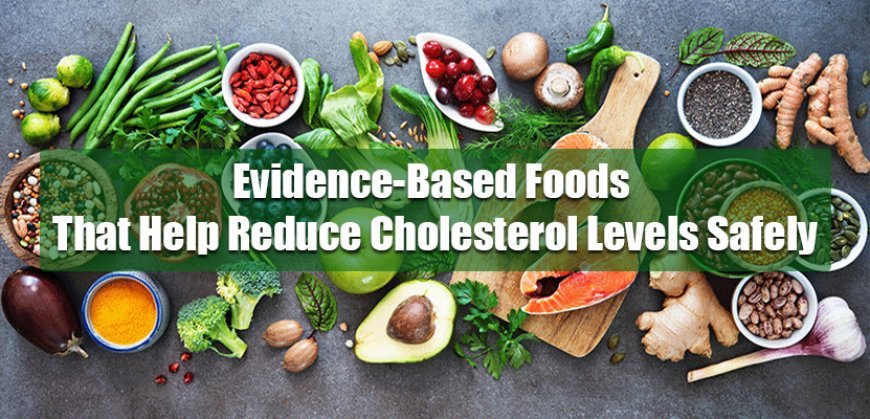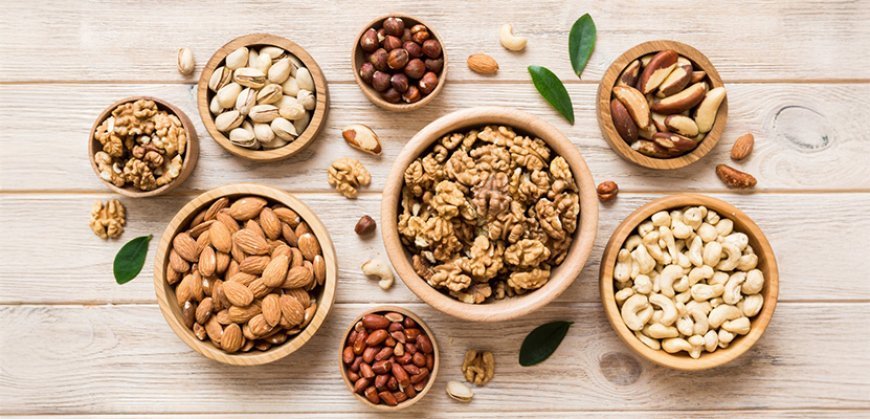Evidence-Based Foods That Help Reduce Cholesterol Levels Safely
What if the foods you eat every day could lower cholesterol? Discover the quiet power of oats, beans, fish, fruits, and more.

Natural Ways to Lower Cholesterol Through Smart Food Choices
No warning. No pain. Just a quiet buildup. Cholesterol slowly settles into the arteries, blocking the flow, unnoticed until it becomes a problem. That is how heart disease begins. Silent and steady.
The remedy starts just as quietly.
Not in a pharmacy. But on a plate. A bowl of oats in the morning. An apple in the afternoon. A handful of walnuts to keep the edge off. These are not dramatic moves. They are steady habits. And they work.
This is not about trends or fads. It is about food doing what it was meant to do. Heal, protect and keep the heart strong.
So, what belongs on the plate? Here are the foods that help lower cholesterol, backed by science and ready to work one bite at a time.
Oats and Barley
Your day can change with a spoon. Oats and barley pack a type of soluble fiber called beta glucan. It traps LDL cholesterol and helps remove it before it gets a chance to do harm. Just 3 grams a day, found in a bowl of oatmeal or barley soup, can cut LDL by up to 10 percent.
It’s not flashy. But it works. Every morning. And the benefits go beyond cholesterol. Beta glucan also helps regulate blood sugar, keeps you fuller for longer and supports gut health by feeding the good bacteria in your digestive system. One simple bowl. Multiple wins.
Beans and Lentils
They don’t need the spotlight. But beans, chickpeas and black-eyed peas carry a quiet power. Their earthy flavor hides a fiber rich, cholesterol busting strength. These humble foods help lower LDL by slowing digestion and keeping your blood sugar steady.
One clinical study found that eating chickpeas every day dropped total cholesterol by nearly 15 mg/dL in just 12 weeks. No hype. Just real food doing real work.
And chickpeas aren’t alone. Lentils and kidney beans bring the same muscle. Packed with soluble fiber, they bind to cholesterol in your gut and help carry it out before it ever hits your bloodstream. Eating just one cup of cooked legumes a day can trim LDL levels by up to 5 percent. That’s not a diet overhaul. That’s a small shift with a big payoff for your heart.
Nuts and Seeds
Forget the myths. Nuts won’t raise your cholesterol. They help lower it. Almonds, walnuts, flax and chia are all rich in unsaturated fats and fiber. Around 2 ounces a day, or a generous handful, has been shown to reduce LDL by about 5 percent.

Sprinkle flax on your yogurt. Add walnuts to your salad. Let food multitask for your heart. Many nuts are also high in plant sterols, natural compounds that block cholesterol absorption in the gut. That means you are not just reducing bad cholesterol but helping your body keep less of it in the first place.
Fatty Fish
Omega 3s won’t bring numbers down like a statin, but they still earn their place on your plate. Found in salmon, mackerel and sardines, these fats lower triglycerides and give HDL, the good cholesterol, a helpful boost.
Just two servings a week make a difference. Grill them. Bake them. Toss them into a bowl of greens. Your heart doesn’t need a dramatic overhaul. It needs steady care. Omega 3s also help calm inflammation inside your blood vessels. That matters. Less inflammation means less plaque buildup, more flexible arteries and a lower risk of heart attacks or strokes. Simple food. Serious impact.
Olive Oil and Avocados
Swap the butter. Pour the olive oil. Spread the avocado. These changes are small but carry weight. Rich in monounsaturated fats, they help reduce LDL without touching HDL.
A single avocado a day? It’s been shown to improve cholesterol profiles in overweight adults. Smooth, creamy and healing. Olive oil adds its own strength too. Extra virgin varieties contain antioxidants called polyphenols, which help protect blood vessels and reduce inflammation. Together, they don’t just lower bad cholesterol. They make your heart stronger from the inside out.
Fruits and Vegetables
Apples, berries, grapes, citrus, okra, eggplant and leafy greens do more than fill your plate. They protect your heart. Loaded with soluble fiber and antioxidants, they help calm inflammation and sweep out cholesterol before it takes hold. Apples and citrus carry pectin, a natural compound that binds to cholesterol in the gut and helps flush it out.

Raw, roasted or blended, however you enjoy them, just make sure you do. People who eat at least five servings a day don’t just feel better. They are better. Lower LDL. Fewer heart risks. And thanks to their water and fiber, you stay full longer and steer clear of the junk that does you no favors.
Soy and Plant Sterols
Tofu, soy milk and tempeh are not just meat alternatives. Soy-based proteins have a proven track record. At 25 grams daily, they can bring down LDL by 5 to 6 percent. Plant sterols, naturally found in small amounts in fruits, vegetables, nuts and grains, are also added to certain fortified spreads, yogurts and juices to boost their effect. These compounds block cholesterol absorption in the gut. Just 2 grams per day can reduce LDL levels by 7 to 10 percent.
They are silent partners in your fight against clogged arteries. And when combined with other healthy changes like more fiber and less saturated fat, their effect becomes even more powerful. Small choices, working quietly, can shift your numbers in a big way.
Sustainable Lifestyle Changes
Here’s the thing. This isn’t about adding a “superfood.” It’s about letting your plate do the healing over time.
- Start your mornings with oats and berries.
- Trade red meat for lentils or chickpeas a few days a week.
- Swap butter for olive oil.
- Add nuts as a snack, not a treat.
- Choose fatty fish twice a week.
- Read labels and find plant sterols where you can.
- Let fruit and vegetables dominate half your plate.
Long-term Impact of Dietary Choices
Cholesterol doesn’t rise overnight. And it won’t fall overnight either. But the foods you choose, bite after bite, meal after meal, create change you can measure. A 5 to 15 percent drop in LDL is not just possible, it’s proven.
This isn’t a trend. It’s real medicine. In your kitchen. On your fork. Waiting. Clinical guidelines now recognize diet as a first-line approach for managing mild to moderate cholesterol issues before medication is even considered. In some cases, consistent dietary changes have helped patients avoid or reduce the need for statins altogether.
FAQs
What foods are best for lowering LDL (bad) cholesterol?
Oats, barley, beans, lentils, nuts, seeds, fatty fish, fruits rich in pectin (like apples and citrus), soy-based foods, and vegetables like okra and eggplant help lower LDL cholesterol.
Can eating oats really lower cholesterol?
Yes. Oats contain beta-glucan, a soluble fiber that binds to cholesterol and removes it from the body. Just 3 grams of beta-glucan a day can reduce LDL by up to 10%.
How do nuts help with cholesterol levels?
Nuts like almonds and walnuts are high in healthy fats, fiber, and plant sterols. Eating around 2 ounces daily can reduce LDL by about 5%.
How quickly can I see results from changing my diet?
Some people notice a drop in cholesterol within 4 to 6 weeks of consistent dietary changes, but it may take a few months for full benefits.
Are there foods that raise good cholesterol (HDL)?
Yes. Fatty fish like salmon, mackerel, and sardines, as well as olive oil and avocados, can help raise HDL while lowering triglycerides.

 Admin
Admin